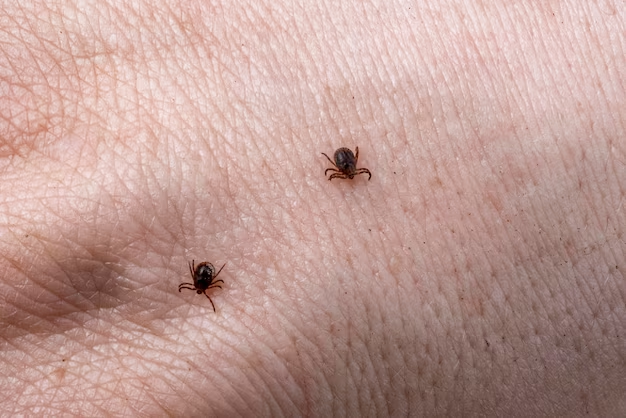Recognizing the Signs of Lyme Disease: What Every Patient Should Know
Have you ever ventured into the woods and come back with an odd rash or felt unusually fatigued? These symptoms might seem minor, but they can hint at a more serious issue—Lyme disease. Educating yourself about Lyme disease symptoms is crucial, especially if you often explore natural environments where ticks are prevalent. Equipped with the right information, you can seek timely medical attention and prevent complications.
Understanding Lyme Disease
To effectively recognize Lyme disease, it's essential to first understand what it is. Lyme disease is an infectious illness caused by the bacterium Borrelia burgdorferi. It's primarily transmitted to humans through the bite of an infected black-legged tick, commonly known as the deer tick. The disease can affect various body systems, including the skin, joints, nervous system, and even the heart.
How It Spreads
Ticks thrive in wooded and grassy areas, making outdoor enthusiasts particularly susceptible. They latch onto your skin, often unnoticed due to their tiny size, and transmit bacteria over several hours. However, not all ticks carry the bacterium that causes Lyme disease, and ticks must be attached for approximately 36 to 48 hours to effectively transmit the infection.
Early Lyme Disease Symptoms
Spotting Lyme disease in its initial stages can greatly enhance treatment success. Within three to 30 days after a tick bite, you might notice the first signs of infection:
1. The Bull's-Eye Rash (Erythema Migrans)
One of the most distinctive symptoms of Lyme disease is the erythema migrans (EM) rash, often called a "bull's-eye" rash due to its characteristic red, circular appearance with a clearing center. However, not everyone with Lyme disease develops this rash, and its appearance can differ significantly:
- Usually appears at the site of the tick bite
- Begins as a small red spot and expands over several days
- May reach up to 12 inches in diameter
- Can feel warm to the touch but is rarely itchy or painful
2. Flu-Like Symptoms
In addition to the rash, early Lyme disease can resemble the flu, with common symptoms including:
- Fever: Mild to moderate fever as the body fights the infection.
- Chills: Occasional chills accompanying the fever.
- Fatigue: Persistent tiredness and lack of energy.
- Headache: A dull, continuous ache.
- Muscle and Joint Aches: General soreness but typically without swelling.
- Swollen Lymph Nodes: Particularly near the site of the bite.
Progressing to Early Disseminated Lyme Disease
If untreated, the bacteria can spread to other parts of the body, resulting in more serious symptoms. This phase can occur weeks to months after the initial tick bite.
3. Additional Rashes
New EM rashes may appear on other parts of the body as the infection spreads, sometimes in locations that never endured a tick bite.
4. Neurological Symptoms
As Lyme disease progresses, it can affect the nervous system. Possible signs include:
- Facial Palsy: Weakness or paralysis of facial muscles on one or both sides (Bell's palsy).
- Meningitis: Characterized by a severe headache and neck stiffness.
- Numbness or Tingling: Particularly in the hands and feet.
- Poor Coordination: Difficulty with balance and regular movements.
5. Cardiac Symptoms
Although less common, Lyme disease can affect the heart, leading to Lyme carditis. Symptoms include:
- Palpitations: A fluttering or pounding heart sensation.
- Shortness of Breath: Especially during physical exertion.
- Lightheadedness: Sometimes leading to fainting.
Chronic Lyme Disease Symptoms
In untreated cases, Lyme disease can transition into a late, chronic stage, presenting persistent and potentially debilitating symptoms. Treatment becomes more complex at this stage, underscoring the importance of early detection and intervention.
6. Severe Arthritic Symptoms
Lyme arthritis typically involves:
- Severe Joint Pain and Swelling: Commonly in the knees, but may affect other joints.
- Intermittent Episodes: Swelling and pain come and go in different joints.
- Persistent Inflammation: Even after the infection is treated, inflammation can linger.
7. Neurological Complications
Lyme disease can cause long-term damage to the nervous system, leading to:
- Cognitive Issues: Memory problems, difficulty concentrating, and confusion.
- Shooting Pain: Episodes of sharp pain or tingling sensations.
- Sleep Disorders: Lyme disease can impair restful sleep, increasing daytime fatigue.
Reacting to Lyme Disease Symptoms
If you suspect Lyme disease, particularly after spending time in areas where ticks are common, it is vital to act quickly. Consult a healthcare professional for an accurate diagnosis through a careful assessment and appropriate tests.
Diagnosis and Testing
Medical professionals may employ various tests to confirm Lyme disease:
- Blood Tests: Detect antibodies to the Borrelia burgdorferi bacteria.
- Western Blot: Confirms Lyme disease by identifying specific proteins.
Preventive Measures
While educating yourself about Lyme disease symptoms is critical, so is prevention. Here are proactive steps to minimize exposure to infected ticks:
- Wear Protective Clothing: Long sleeves, pants, and tall socks can reduce skin exposure.
- Use Insect Repellent: Apply repellents containing DEET on clothing and exposed skin.
- Perform Tick Checks: After outdoor activities, examine your body and clothing for ticks.
- Shower Shortly After Being Outdoors: This can help remove unattached ticks.
Distinct Summary of Practical Steps
The better prepared you are to spot and prevent Lyme disease symptoms, the more you can focus on enjoying your time outdoors. Here’s a quick reference guide:
- 🔍 Inspect for Ticks: Regularly check your skin after being in tick-prone areas.
- 🏞️ Be Observant: Look out for the characteristic "bull’s-eye" rash and flu-like symptoms.
- 🏃 Stay Informed: Know that early treatment can prevent severe complications.
- 🧢 Dress Smart: Wear appropriate outdoor clothing to reduce skin exposure.
- 🚿 Act Fast: Shower soon after being outdoors and conduct full-body tick checks.
- 📞 Seek Help: Consult healthcare professionals for tests and diagnosis if symptoms arise.
By recognizing these symptoms, you can take charge of your health and make informed decisions about seeking medical guidance, thus improving your outcomes and maintaining a fulfilling lifestyle.
